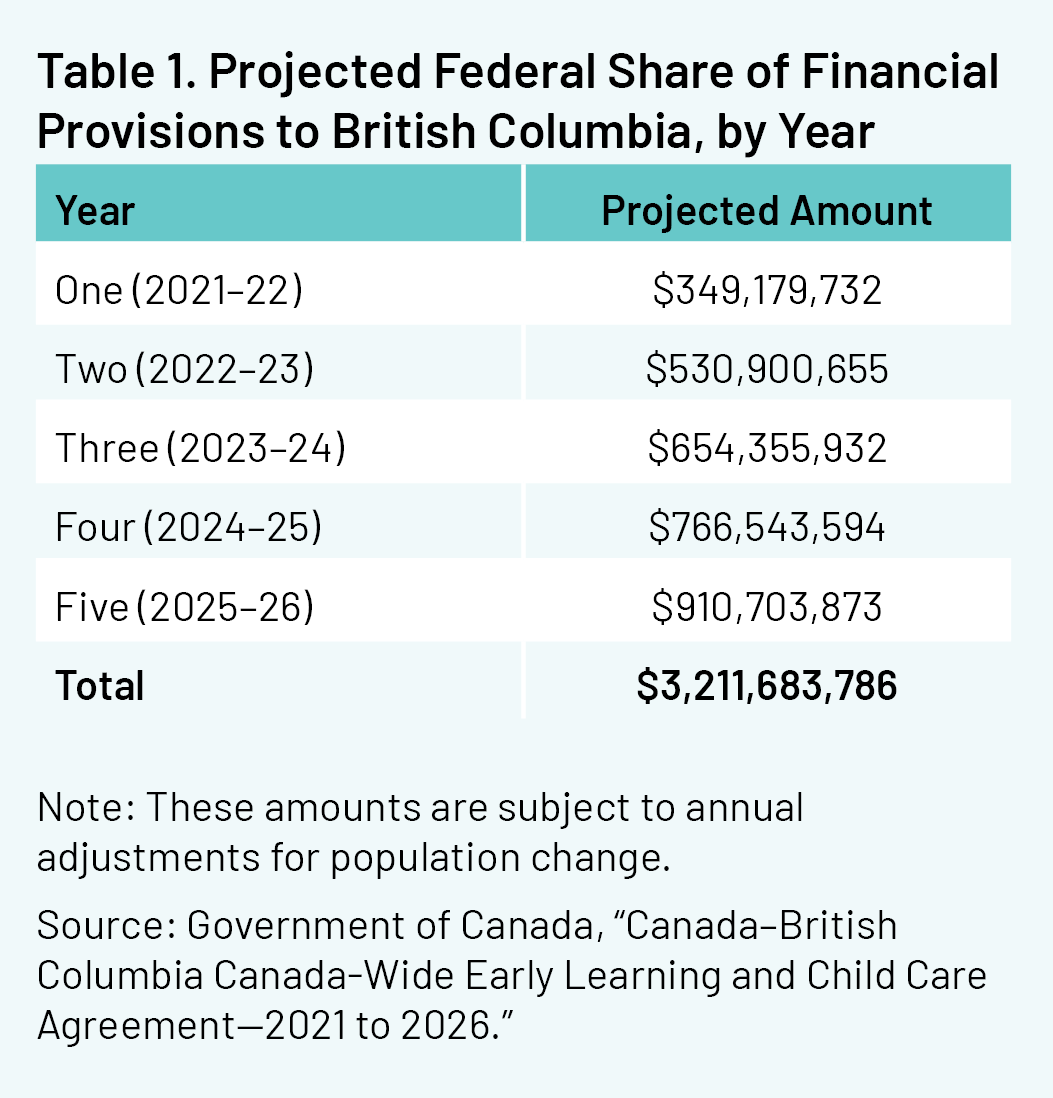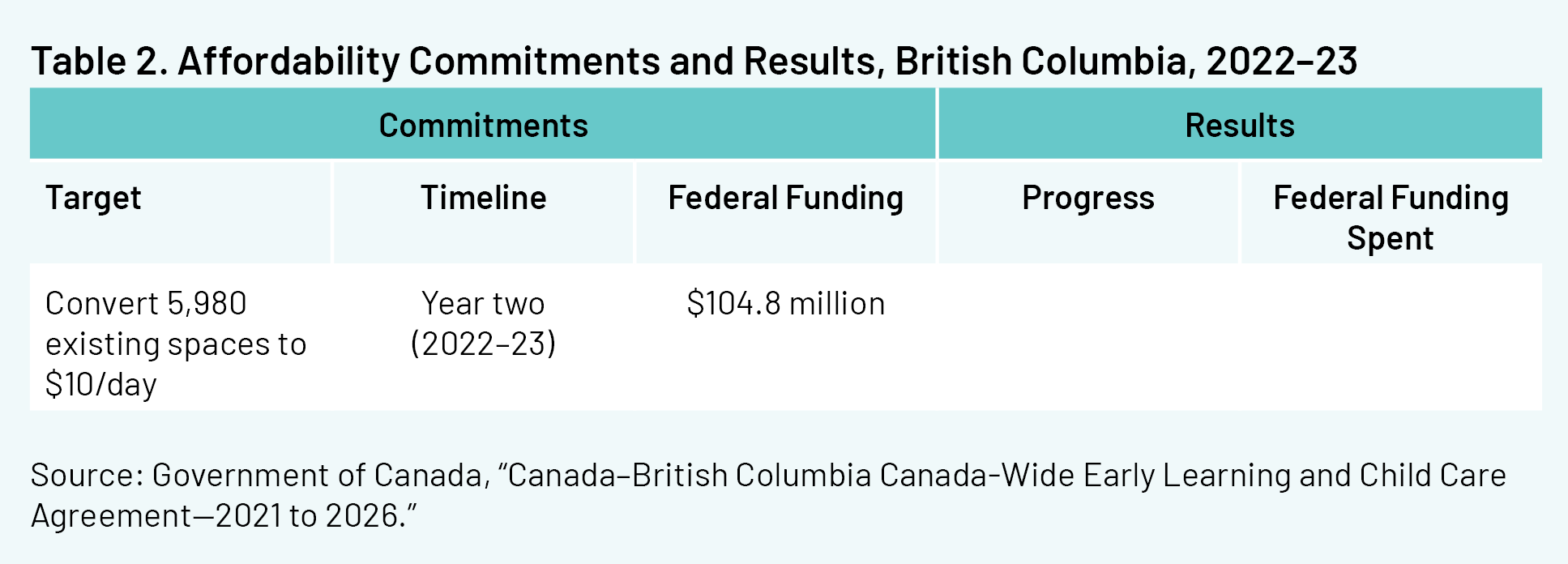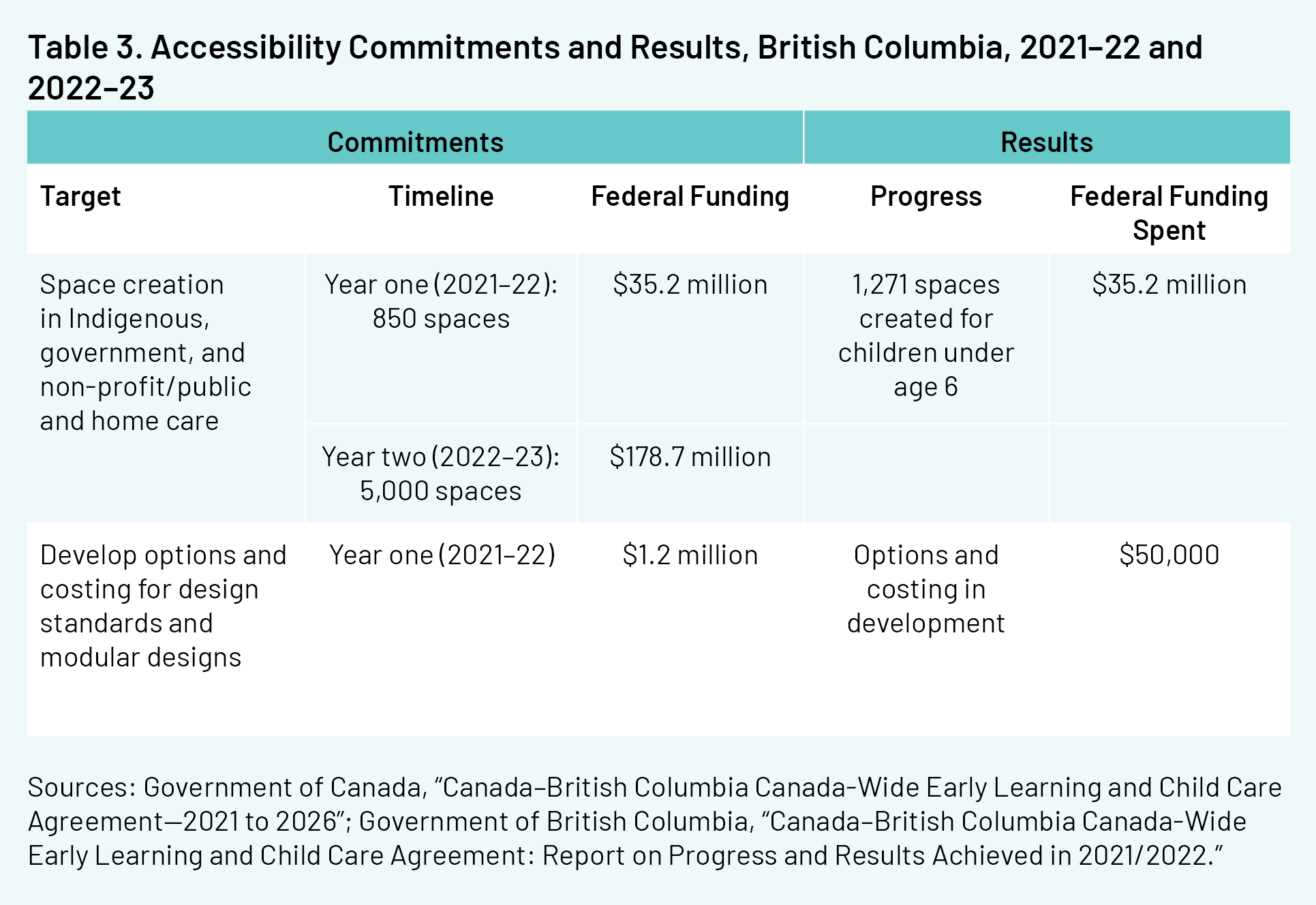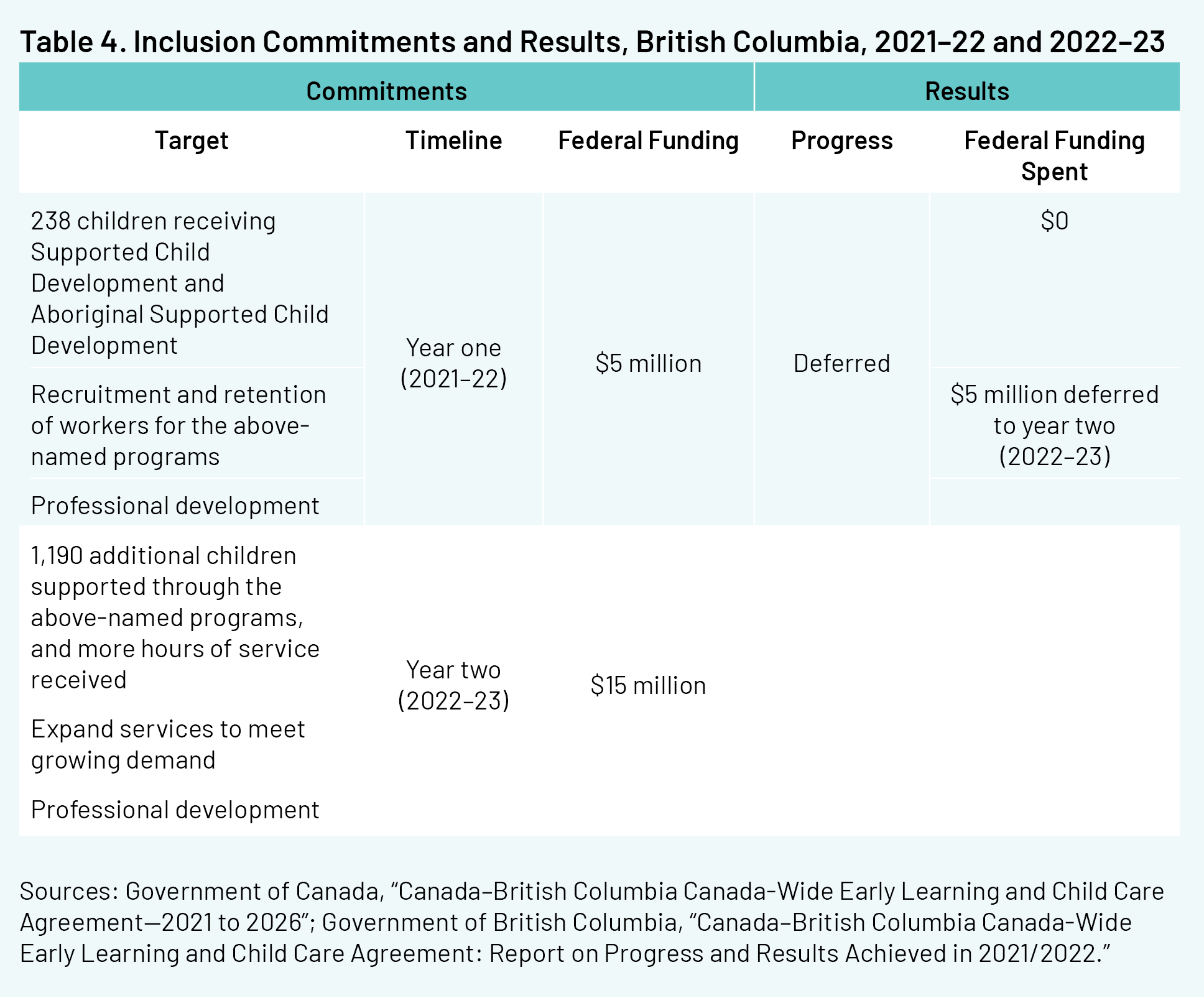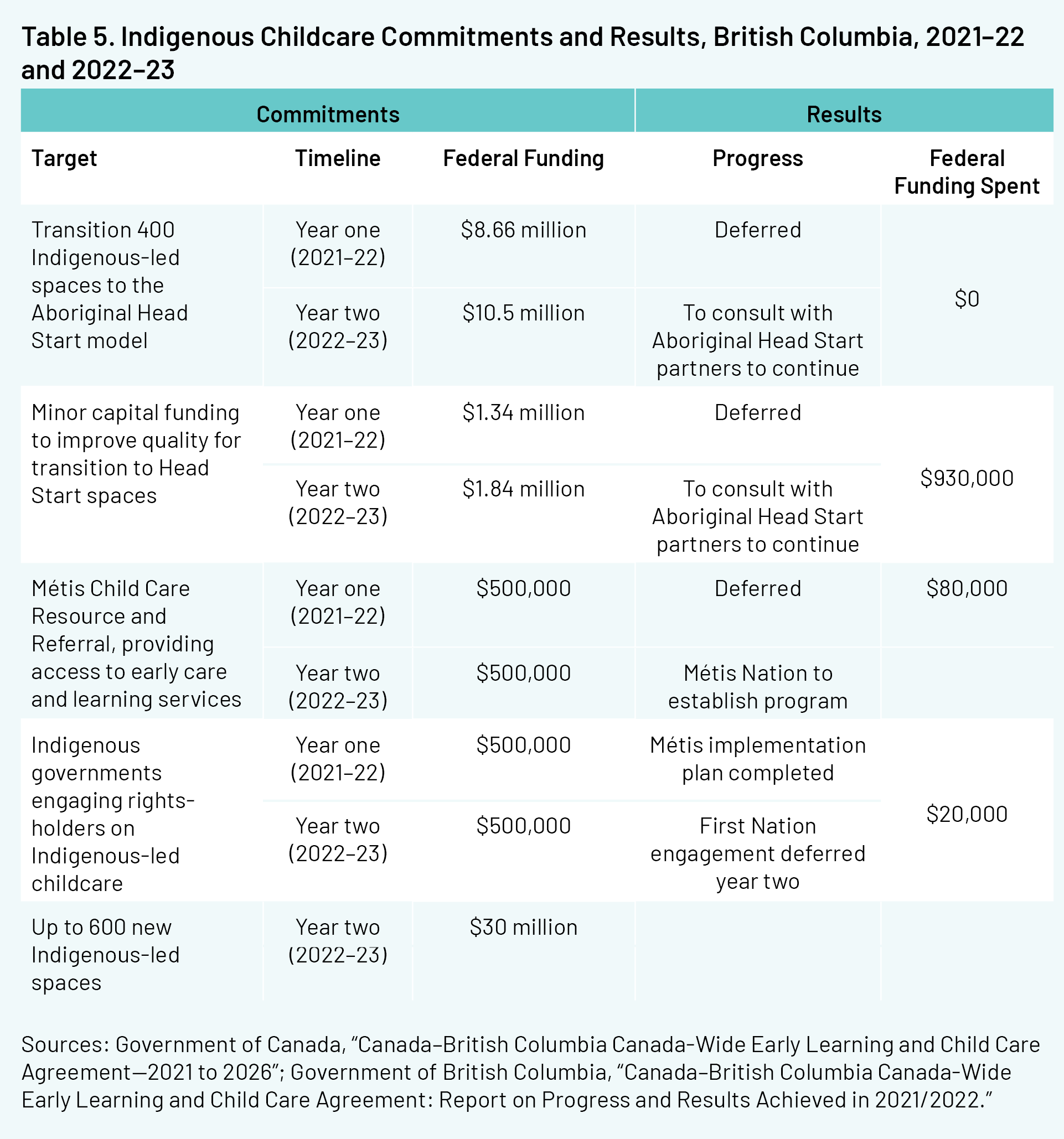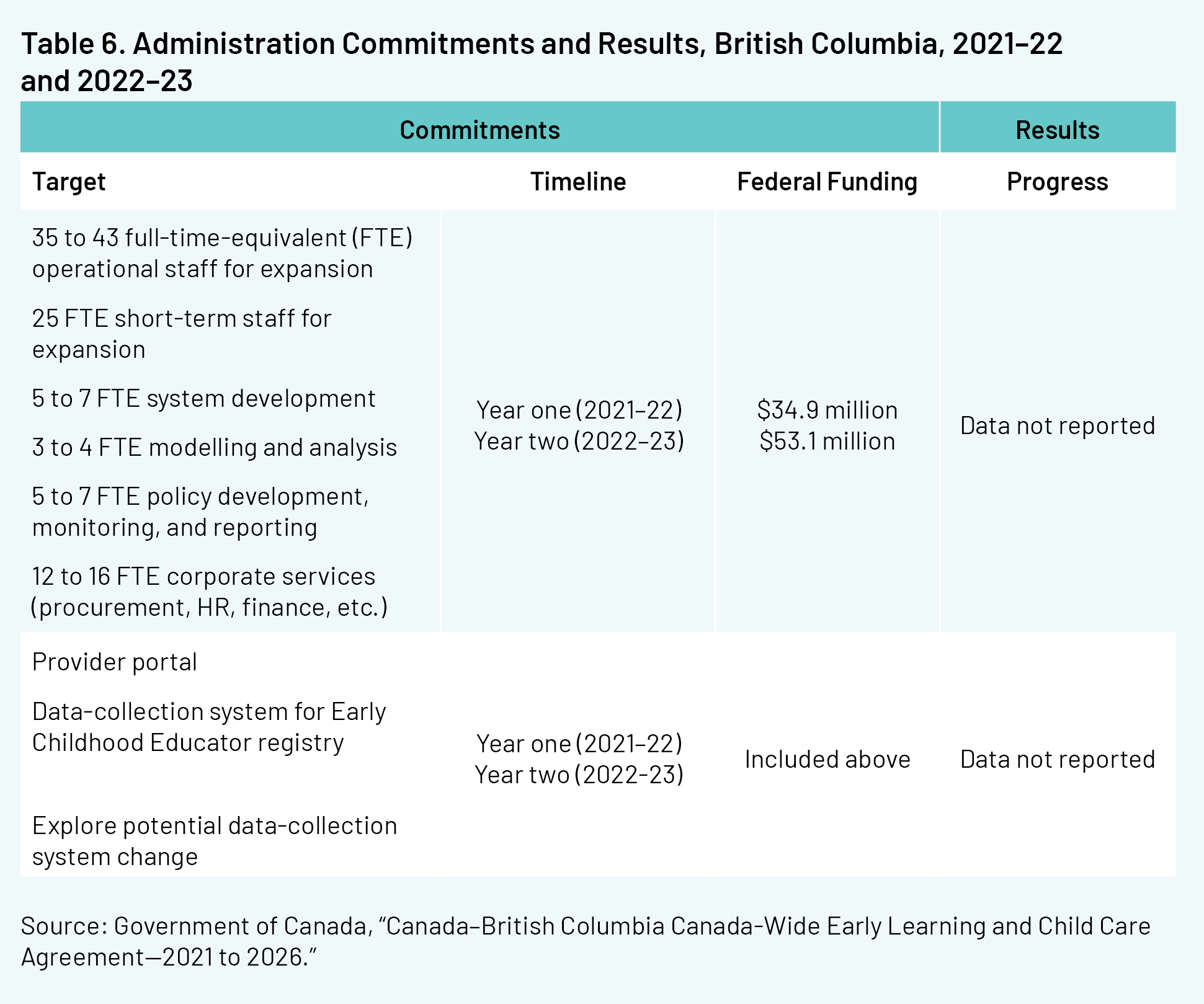Introduction
Canada’s federal budget for 2021 included a $27 billion commitment to establish a $10-a-day childcare program within five years. Combined with additional funding, a total of $30 billion was committed in years one through five, with a projected annual cost of at least $9.2 billion in year five and later. The federal government then entered into negotiations with each province and territory (negotiating a unique asymmetrical agreement with Quebec, which had a program already) to jointly determine the funding and goals. These negotiations resulted in a “Canada-Wide Early Learning and Child Care Agreement” with each province and territory (which we refer to as “the Agreement” in this brief).
Cardus conducted its own costing estimate in 2021 prior to the release of the agreements, concluding that the federal government had underestimated the cost and complexity of implementing a national childcare program. 1 1 A. Mrozek, P.J. Mitchell, and B. Dijkema, “Look Before You Leap: The Real Costs and Complexities of National Daycare,” Cardus, 2021, https://www.cardus.ca/research/family/reports/look-before-you-leap. Cardus is now studying the funds spent and goals achieved in each province and territory annually. We will issue provincial and territorial reports for each year of the agreements as data become available.
The Agreement with British Columbia was signed on July 8, 2021. 2 2 Government of Canada, “Canada–British Columbia Canada-Wide Early Learning and Child Care Agreement—2021 to 2026,” July 8 2021, https://www.canada.ca/en/early-learning-child-care-agreement/agreements-provinces-territories/british-columbia-canada-wide-2021.html.
This brief presents the results for year one for BC (fiscal year 2021–22, which is April 1, 2021 to March 31, 2022).
Year-One Summary
The province should be commended for issuing an annual progress report within the timeframe specified in the Agreement, as many provinces and territories have not done so. 3 3 Government of British Columbia, “Canada–British Columbia Canada-Wide Early Learning and Child Care Agreement: Report on Progress and Results Achieved in 2021/2022,” November 2022, https://www2.gov.bc.ca/assets/gov/family-and-social-supports/child-care/cw_elcc_annual_report_2021_22.pdf.
The province had been moving toward a $10-a-day, universal childcare program since committing to the “ChildCare BC” plan in 2018, so it is little surprise that BC was the first province to sign an agreement, as its priorities are similar to those of the federal government.
BC has set aggressive space-creation targets, and it created 1,271 new licensed spaces in year one for children under age six, exceeding its goal of 850 new licensed spaces. Yet it will need to achieve a pace equal to about 7,000 new spaces a year to meet its target by the end of year five of 30,000 new regulated spaces for children under age six. Separate from the space-creation targets, the affordability objective under the Agreement largely focuses on converting existing spaces to a $10-a-day model, though no funds were committed to this objective in year one.
While the Agreement does not represent the totality of provincial efforts toward childcare, it is notable that the province sought an amendment to carry over 89 percent of the funding from year one. As a result, most of the year-one targets were unmet. This is most notable in the funding for Indigenous-led childcare programs and inclusion targets. The action plan for Indigenous childcare relies on partnerships that may require more time for consultation and planning. Efforts to improve childcare quality were funded through other sources outside the Agreement.
The childcare sector was struggling with the impact of the pandemic during the implementation of the first year of the Agreement. Firsthand reports from childcare providers suggest that the province has experienced significant challenges in processing funding applications from current licensed providers and in distributing funds to these providers within the province’s own timelines. These difficulties have resulted in uncertainty among providers and in some cases required them to carry significant cost while waiting for approved funding. These issues, along with ongoing staffing and accreditation difficulties, will pose a significant challenge as funding increases over the course of the Agreement. The province must address the onerous administrative burden it has placed on child care providers, and distribute funding in a timely manner to these providers if it hopes to meet its objectives under the Agreement.
Notably, the province did not report on administrative costs incurred during the first year of the Agreement.
Agreement at a Glance
Term: April 1, 2021 to March 31, 2026.
Federal Funding Estimate
Table 1 displays the projected federal share of the financial provisions for each year of the Agreement.
Major Targets
- Reduce parental cost to an average of $10 a day by end of year five.
- Increase the number of $10-a-day spaces to a total of 12,500, and reduce the average parental fee by 50 percent of the 2019 average fee, for a combined per-day average of $21, by December 2022.
- Create 30,000 new regulated spaces for children aged 0 to 5 by year five, and 40,000 new spaces in total by 2027–28, exclusively in not-for-profit and public providers.
Pre-Agreement Baseline Measures
- Provincial childcare budget of $610 million in 2019–20 (excluding time-limited pandemic-related initiatives). 4 4 British Columbia Ministry of Finance, “Budget and Fiscal Plan 2021/22–2023/24,” Government of British Columbia, April 20, 2021, 14, https://www.bcbudget.gov.bc.ca/2021/pdf/2021_Budget%20and%20Fiscal%20Plan.pdf.
- Average parental fees of $40 a day in 2019. 5 5 Government of Canada, “Canada–British Columbia Canada-Wide Early Learning Agreement,” annex 2, part 1.
- 120,948 funded, licensed childcare spaces in operation in 2019–20, of which 2,476 were $10 a day. 6 6 British Columbia Ministry of Education and Child Care, “BC Child Care Data and Reports,” Government of British Columbia, https://studentsuccess.gov.bc.ca/childcare.
- Licensed-space coverage for 20 percent of children ages 0 to 12 as of 2021. 7 7 Government of Canada, “Canada–British Columbia Canada-Wide Early Learning Agreement,” annex 2, part 1.
Agreement Targets and Progress
The Canada-wide agreements share a similar structure, focusing on four priorities: affordability for parents, increasing access through space creation, making childcare more inclusive, and improving the quality of care.
British Columbia provided an action plan for the first two years of the Agreement (2021–22 and 2022–23). The tables that we show here summarize the commitments made, the year in which targets are to be achieved, and the federal funding allocated to the targets.
The tables also summarize the progress made towards the target and the funding spent on these efforts in year one. Results and spending were publicly reported, per section 5.2.2.d of the Agreement, and the results that we show are taken from the “Canada–British Columbia Canada-wide Early Learning and Child Care Agreement: Report on Progress and Results Achieved in 2021/2022,” unless otherwise noted.
Affordability
The province was transitioning to a $10-a-day program prior to the Agreement, and fee-reduction initiatives have included converting existing regulated spaces to the $10-a-day model. No Agreement funding was allocated to fee reduction during year one, but $104.8 million will be allocated in year two. 8 8 Government of Canada, “Canada–British Columbia Canada-Wide Early Learning Agreement,” table 1. Funding from an existing bilateral agreement with the federal government was allocated to converting spaces. Additionally, 4,015 spaces were converted through funding allocated in the 2021 provincial budget, and 5,980 existing childcare spaces will be converted in year two (table 2).
Accessibility
The province exceeded its target of 850 new spaces in year one, creating 1,271 spaces with the $35.2 million allocated in the Agreement. Space allocation included 101 spaces in Indigenous agencies, 595 spaces through school boards, post-secondary institutions, and municipalities, and 575 spaces through not-for-profit agencies. Independent for-profit providers are not eligible for the Agreement’s space-creation funds.
The provincial action plan under the Agreement committed the province to the “development of options and costing for childcare design standards and modular designs.” The purpose is to increase speed and efficiency in future space-creation. The province failed to meet the target and actioned only $50,000 of the allocated $1.2 million in year one. The province reports that efforts toward this target are ongoing (table 3).
Exceeding its year-one space-creation target is a win for BC. That said, the province will need to significantly increase annual space-creation and generate just over 7,000 new spaces per year to meet its goal of 30,000 new spaces by year five. Agreement funding for space-creation is limited to public and not-for-profit providers, meaning that the province will need to reach targets without the 57 percent of facilities that are run by private operators. 9 9 For-profit facility estimate taken from E. Akbari, K. McCuaig, and D. Foster, “Early Childhood Education Report 2020: British Columbia,” Ontario Institute for Studies in Education and University of Toronto, 2021, https://ecereport.ca/media/uploads/2021-profiles-en/britishcolumbia_profile_oct-2021.pdf.
Inclusion
The provincial action plan allocated $5 million for Supported Child Development and Aboriginal Supported Child Development programs, to assist 238 children who require extra support and assistance with physical and developmental challenges in order to be included in childcare programs. Included in this allocation was an increased emphasis on recruitment and retention of support workers and on professional development. The province failed to action the funding allocation and deferred until year two. Even with the deferral, the province estimates that it will be unable to use the $5 million in year two because of significant capacity issues within the sector (table 4). This illustrates the complex challenges within the sector concerning children requiring extra support.
Indigenous Childcare
The province spent only 9 percent of the funding allocated for Indigenous childcare in year one. According to the province, more time is required for consultation with Indigenous partners, and the unspent funding has been deferred until year two. The province was unable to action the $8.66 million allocated for 400 Aboriginal Head Start spaces, and it deferred $410,000 of the $1.34 million for minor capital improvements for Aboriginal Head Start (table 5).
In partnership with Métis Nation BC, a Child Care Resource and Referral program was planned, with an anticipated spring 2022 implementation. The province reports that it will need to further engage with the First Nations Leadership Council to accomplish this target together.
The Indigenous population is growing, and Indigenous children account for 10.4 percent of children aged 0 to 6. 10 10 Government of Canada, “Canada–British Columbia Canada-Wide Early Learning and Child Care Agreement,” annex 2, part 1. Although the Agreement does not represent the totality of childcare initiatives in partnership with Indigenous communities, BC will need to overcome a slow start in year one to meet its obligations under the Agreement.
Quality
No quality targets were set in years one and two. Funding from separate federal agreements, including the 2017 Bilateral Agreement and the one-time Early Childhood Education workforce fund, were committed to quality measures and are not monitored here.
Administration
The province did not report on administrative costs within its annual report on progress and results achieved in 2021–22 (table 6). Under the Agreement, the province can allocate up to 10 percent of funding to administration, representing a significant cost. 11 11 Government of Canada, “Canada–British Columbia Canada-Wide Early Learning and Child Care Agreement,” sec. 4.5. For increased transparency, these costs should be included in future briefs.
Legislative and Policy Changes
British Columbia’s Early Learning and Child Care Act (ELCA) came into force in October 2021, replacing the Child Care BC Act and the Child Care Subsidy Act. The Act directs the use of childcare grants for Indigenous and inclusive childcare. It grants the Ministry of Children and Family Development authority to set limits on parent fees and compels the province to report annually on activities supporting childcare. The intent of the legislation is to aid the province in moving toward a universal childcare program.
Also in 2021, the province enacted the Early Childhood Educators Act that mandates a registry for early childhood educators (ECEs) and approved programs. The Act makes it easier for ECEs trained outside the province to integrate into the system and provides greater clarity about post-secondary training for ECEs.
As noted above, the province and federal government agreed to amend the Agreement, to increase the carry-over percentage for year one from 75 percent to 89 percent. According to the amendment, this adds $50.26 million to the total funding allocated for year two. 12 12 Government of Canada, “Agreement to Amend the Canada–British Columbia Canada-Wide Early Learning and Child Care Agreement—2021 to 2026,” https://www.canada.ca/en/early-learning-child-care-agreement/agreements-provinces-territories/british-columbia-canada-wide-2021/amendment.html.
Additional Observations
As the province moves toward a universal childcare program, it has struggled with ECE labour-supply difficulties and with the administration and distribution of grants.
ECE labour shortages predate the COVID-19 pandemic and continue to be an issue across the country. In a March 2022 roundtable hosted by the BC Liberal caucus, one childcare provider stated, “We have no problem finding good quality candidates. We have a problem finding certificates.” 13 13 A. Mrozek, “Comment: The Flaming Hoops of Death of BC Child Care,” Times Colonist, April 4, 2022, https://www.timescolonist.com/opinion/comment-the-flaming-hoops-of-death-of-bc-child-care-5228315. The challenge, according to this provider, is getting good candidates certified to work in their facilities. Much of the focus has been on ECE pay, but the contributing factors are broader, including the limited number of spaces in ECE training programs. Our future monitoring briefs will contribute to evaluating how the introduction of the Early Childhood Educators Act in 2021, and more recent changes to the Provincial Nominee Program prioritizing immigration of ECEs, affect these labour issues. 14 14 Government of British Columbia, “Health-Care Workers, ECEs Focus of Changes to BC’s Immigration Program,” March 10, 2022, https://news.gov.bc.ca/releases/2022MUNI0008-000317.
An additional challenge in year one was the delays in processing annual grant applications and distributing funds. In addition to the administrative burden placed on providers applying for annual grants, the approval for funding was frequently delayed, with the government missing its own deadlines. In March 2022, some providers notified parents of potentially significant fee increases because of provincial delays in processing applications. 15 15 L. Cordasco, “Some BC Childcare Operators Warning Parents of Extra Fees in April,” Vancouver Sun, March 22, 2022, https://vancouversun.com/news/local-news/some-childcare-operators-warning-parents-of-extra-fees-in-april-because-of-government-delays-in-approving-subsidies. One provider told the March 2022 Liberal caucus roundtable that she covered the cost of the ECE Wage Enhancement for seven months and was still waiting for the province to deliver the promised funding. 16 16 K. Kirkpatrick (moderator), “BC Liberal Caucus Childcare Providers Funding Roundtable (Virtual),” BC Liberal Caucus, March 22, 2022.
The challenges in processing applications and distributing funds are long-standing in BC, but with the increasing federal funding over the life of the Agreement, the province will need to quickly improve its ability to administer funds in order to meet targets. During the March 2022 roundtable, some providers expressed uncertainty about the long-term viability of their facilities due to poor service from the province. The province must address chronic administrative issues and improve the relationship with providers or risk compounding issues, as funding and expectations increase over the life of the Agreement.

